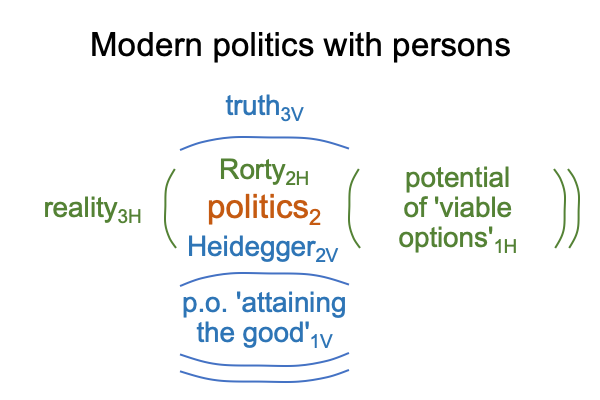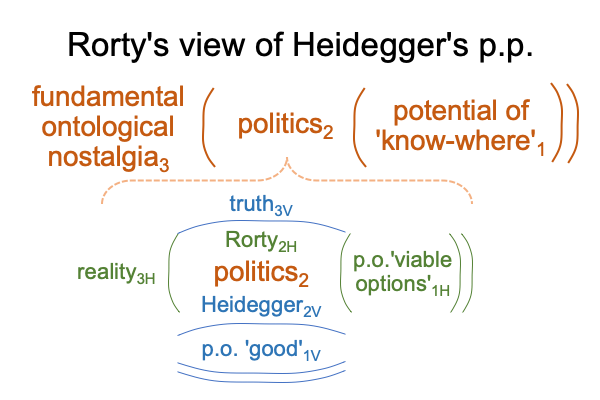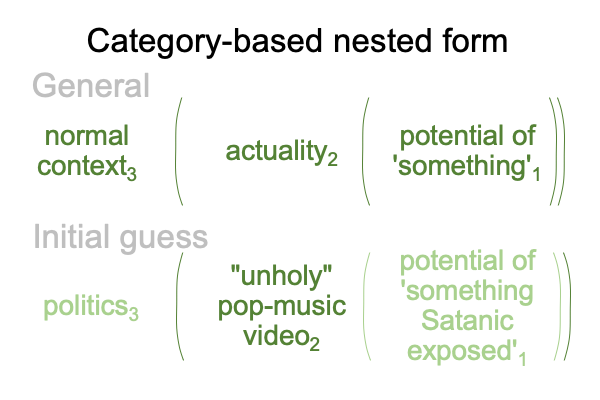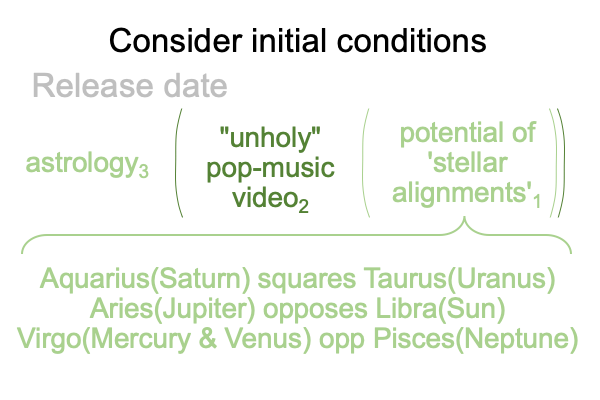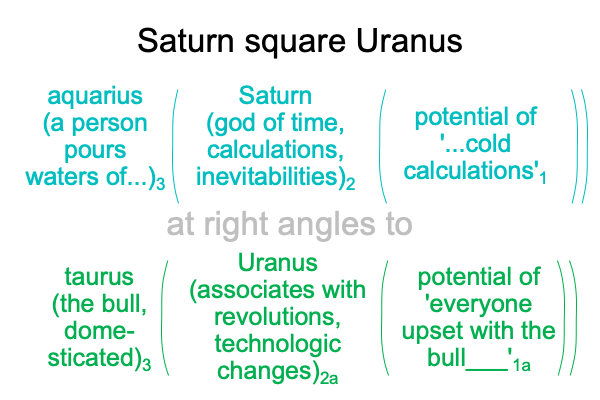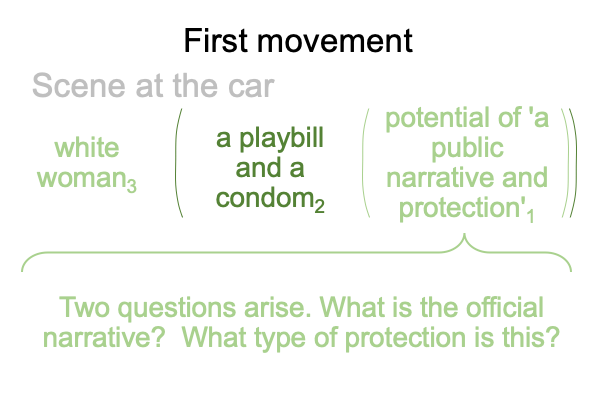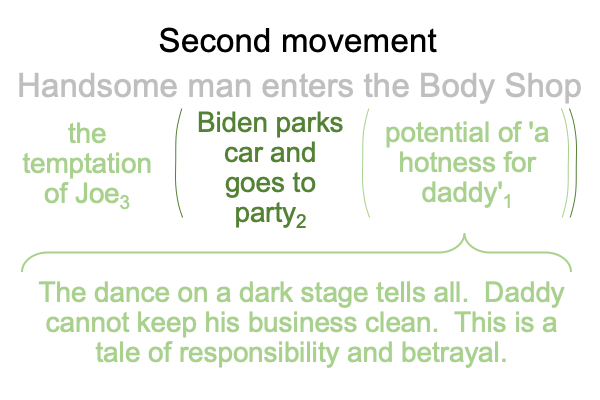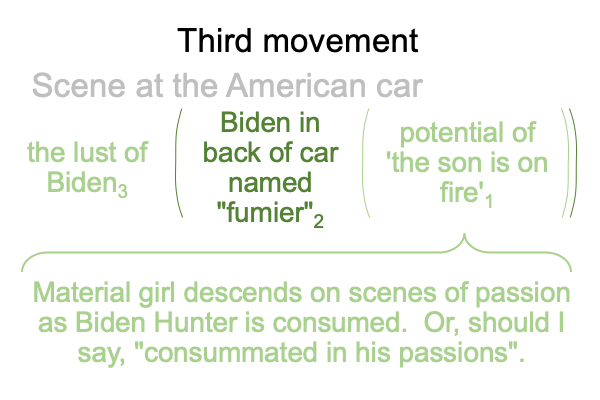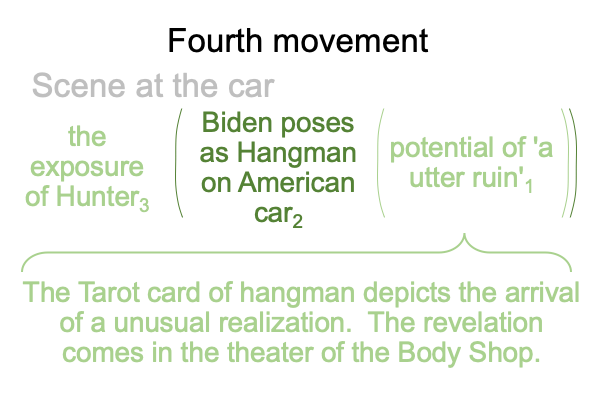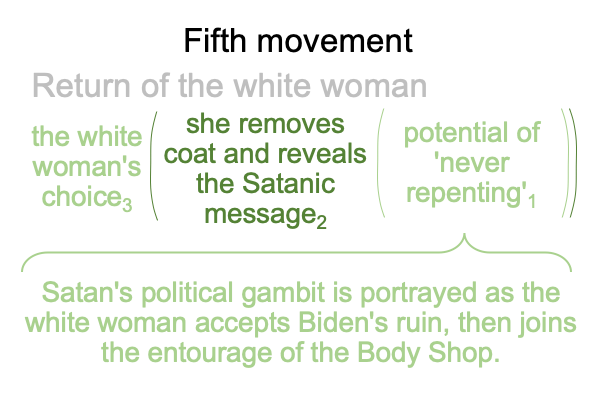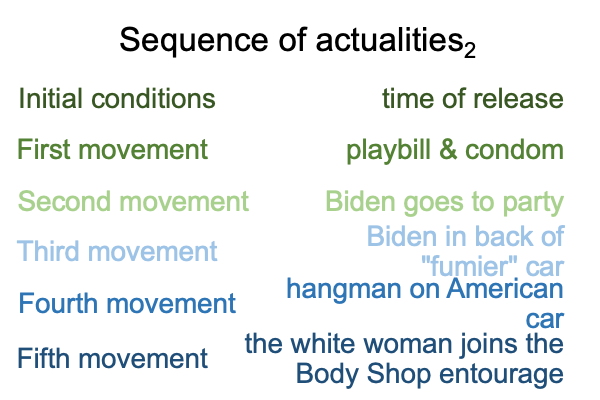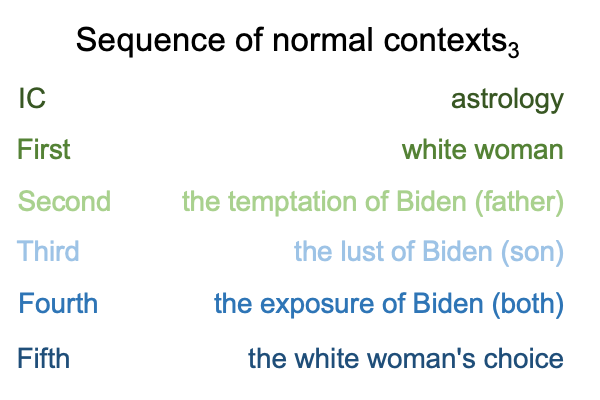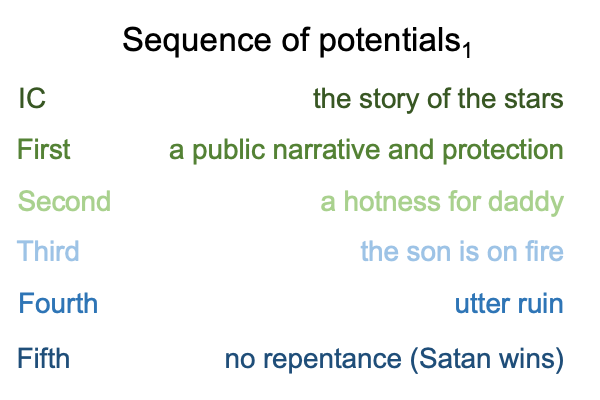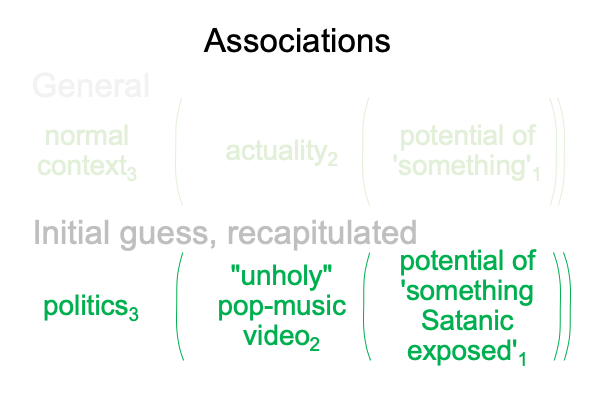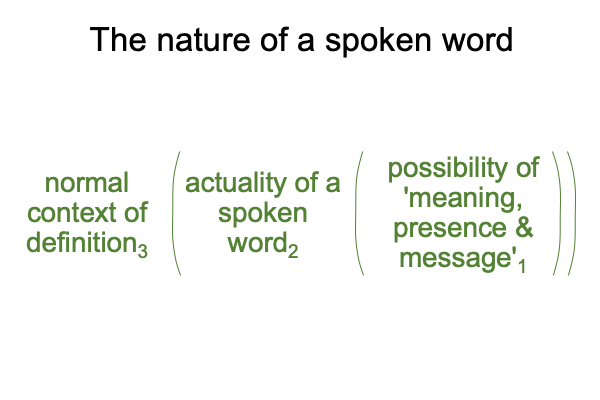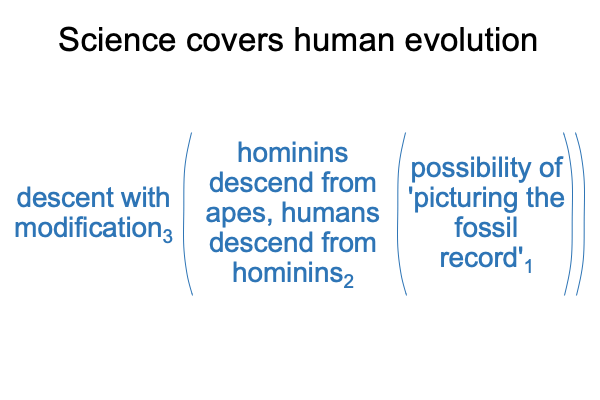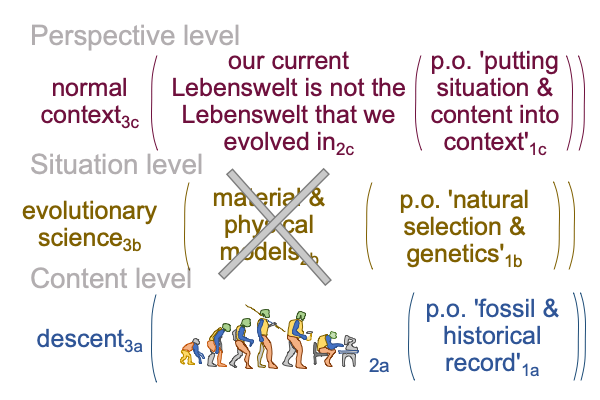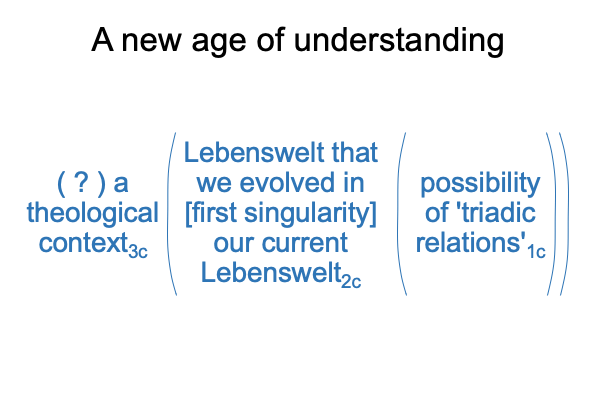Looking at Michael Millerman’s Chapter (2020) “Rorty” (Part 1 of 3)
0001 This chapter appears in Michael Millerman’s Book (2020) Beginning with Heidegger: Strauss, Rorty, Derrida and Dugin and the Philosophical Constitution of the Political (Arktos Press). The composition of the book sends a message. A forty-nine page introduction is labeled as a preface, complete with Roman numerals. The first chapter covers Heidegger and stands in the center of the book. Then, chapters two through five covers the responses of four political philosophers to Heidegger’s academic labors (as well as his political affiliation).
Richard Rorty is discussed in the third chapter. This chapter serves as a transition from the weighty chapters on Heidegger and Strauss to the surprising chapters on Derrida and Dugin.
0002 Rorty offers a change of style. Rorty is an American philosopher. This pleases me, since I write like an American, too. I roll, roll, roll down the river of literary endeavors. My paddles are purely relational structures, such as the category-based nested form and the Greimas square.
Consequently, Millerman refers to movies, rather than books. And, if books must be mentioned, then novels come first.
0003 Oh, I should add, the first novel comes from the pen of Cervantes. Don Quixote marks the start of the Age of Ideas. In seventeenth-century Spain, two movements coincide. On one hand, Baroque scholastics finally articulate the causality inherent in sign-relations. On the other hand, Cervantes creates a new literary genre.
Perhaps, these two hands belong to a single entity. The novelist represents the scholastic behind the mask of modernity. Like the heroic character in V for Vendetta, there is no removing the mask. The Spanish innovator spins away from truth (the scholastics were all about mind-independent being) and leaps towards happiness (the novelists are all about mind-dependent beings).
Is it any surprise that, in the next century, France produces a revolution with a similar attitude? Then, two centuries later, today’s social democratic politics perform the same routine.
0003 Richard Rorty wrestles with a strange duality. Politics is contextualized by two distinct masters, truth and reality. Politics emerges from the potential of good (which goes with truth) and the potential of what can be done (which goes with reality).
Here is a picture of two nested forms.
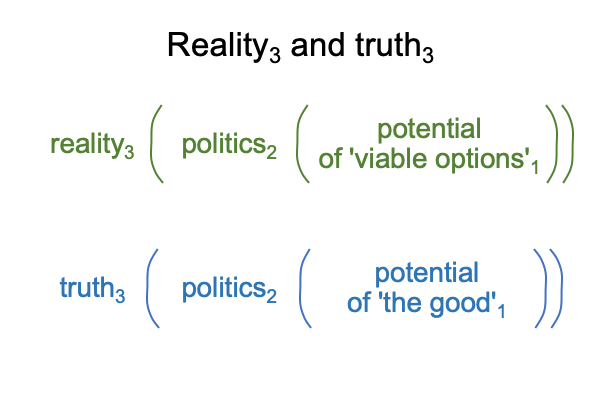
0004 Of course, Rorty wants to step away from truth3 and find happiness in reality3. But, one cannot take the mask without the face or the face without the mask. One cannot say, “Look at the mask without thinking about the face.”
Here is where Rorty flounders. His social democratic politics tell him that viable options are the only things that matter. But, as a philosopher, he must face the question as to which options are good.
0005 In short, politics is a single actuality that is composed of two distinct nested forms. Neither nested form can situate the other. So, the actualities for both nested forms fuse, creating one single contradiction-filled actuality, as described in the chapter on message in Razie Mah’s masterwork, How To Define the Word “Religion”.
I call the following diagram, “an intersection”.
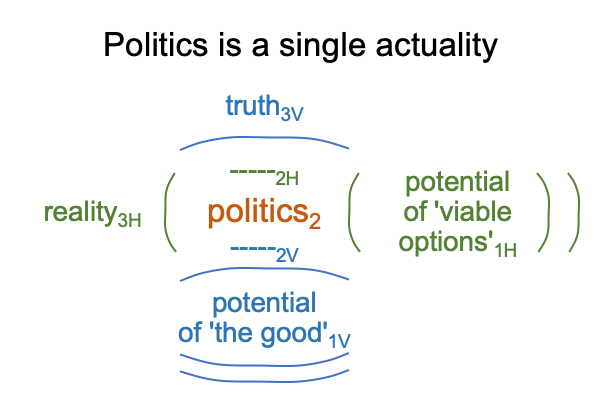
0006 Right away, I spy that the single actuality of politics2 veils two unspoken actualities that emerge from (and situate) the vertical and horizontal potentials. These two actualites are overshone by politics2, in the same way that Mercury and Venus appear to disappear within the Sun in astrological conjunctions. The technical term is “combustion”.
Here is a Greek parody of politics2.

0007 Yes, truth3V and reality3H exhibit different orbits around politics2.
According to Millerman, Rorty is a social democrat advocating for truthlessness and hopefulness.
0008 How does that statement mesh with the above intersection? Rorty distains Heidegger’s romance with language and says that there is no such thing as a thing itself that can be put into language. So forget esse_ces (beings substantiating) and essences (substantiated forms). Indeed, forget righteousness. The question is whether the thing is useful. Or not.
At first, it seems that Rorty is only interested in the horizontal axis.
0009 But then, Rorty writes that there are three conceptions of the aim of philosophizing in the modern era. These three are Husserl’s scientism, Heidegger’s poetics and Dewey’s pragmatism. The latter two respond to the former. Husserl idealizes scientists. Heidegger extols poets. Pragmatists, like Rorty, Dewey and James, prefer engineers.
Now, if I associate these embodiments into the above mystery, then I replace Mercury with the engineer and Venus with the poet, resulting the the following intersection.

0010 Once I diagram this, the contradictions become more apparent. The Heideggerian venusian poet2V and the pragmatist mercurial engineer2H orbit an all encompassing solar politics2. From the point of view of an astrologer, sometimes these inner planets run ahead of the solar presence, sometimes they lag behind the solar presence, and sometimes they are in conjunction with the solar presence. Combustion! The Sun’s transit through the constellations, plays this celestial drama over and over again, for those who watch the heavens. For those who watch politics, the Earth orbits the sun.

